Today, more women struggling with the problem of infertility around the world are troubled by endometriosis. Talking about the world level, statistics show that about 40 percent of women face problems in conceiving. Every year 1 in 10 women suffer from endometriosis. In which the maximum number of women between the ages of 18 and 35 are involved. The main reason for this is abdominal pain and not being able to keep warm.
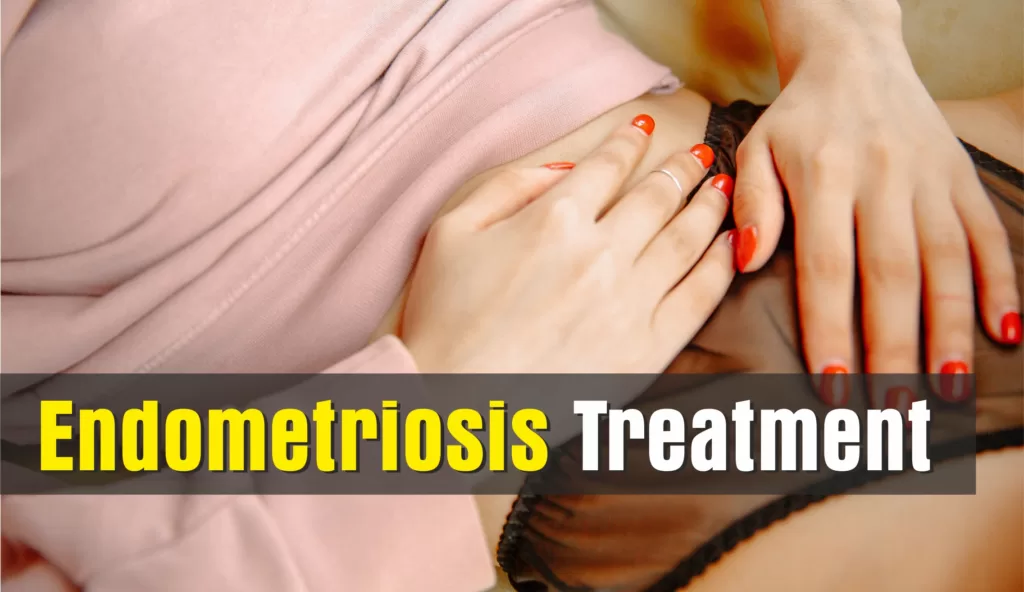
When this problem occurs, the tissue that covers the womb (endometrium) starts growing in abnormal places like ovaries or around the uterus. During periods, deep blood clots start accumulating in the ovaries and pelvic and surrounding blood spots accumulate, due to which the intestines, tubes and ovaries stick together.
This can be dangerous as it damages the tubes and ovaries, which can lead to infertility. What is endometriosis disease in this article today? Learn everything about its symptoms, causes, treatment, medicine, treatment and disadvantages.
What is Endometriosis?, Dealing with Endometriosis
Endometriosis is a problem occurring in the uterus. In which tissue similar to the tissue that forms the lining of the uterus begins to grow outside the uterine cavity. The lining of the uterus is called the endometrium. Endometriosis occurs when endometrial tissue grows on the tissue lining the ovaries, bowel, and pelvis. In some cases, it also affects the ovaries and fallopian tubes.
Types of Endometriosis, Identifying Symptoms, Home Treatment Options
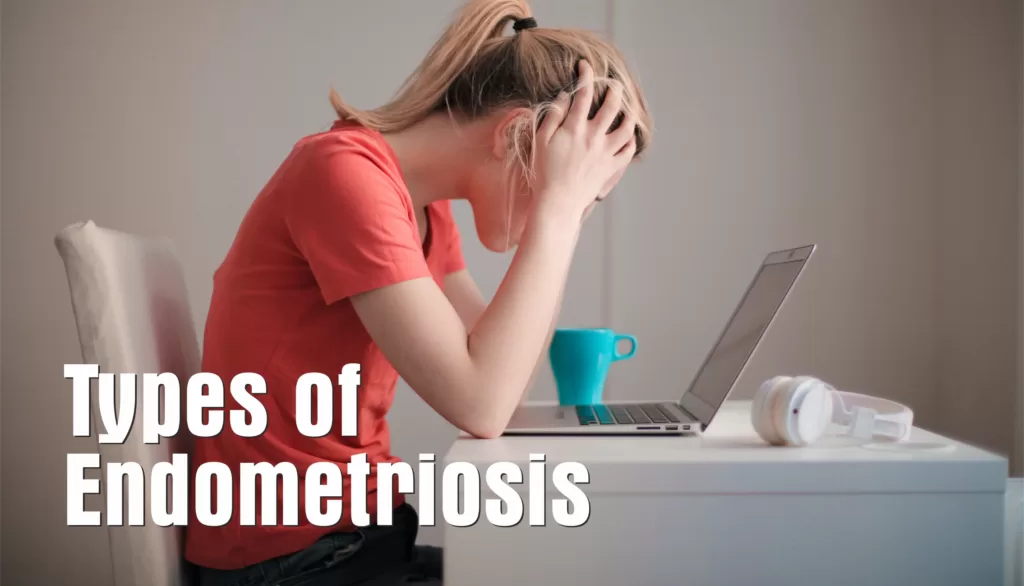
Endometriosis is classified based on where it is located. These are mainly of three types:
1. Superficial Peritoneal Lesion
This is the most common type of endometriosis. In this there are lesions on the peritoneum of the victim. The peritoneum is the thin film that forms the lining of your pelvic cavity.
2. Endometrioma (Ovarian Lesion)
In this type of endometriosis, deep, fluid-filled cysts form deep inside the victim’s ovaries. These cysts are also called chocolate cysts. Treatment also does not have a very good effect on them. It is not cured by normal treatment and can also damage the surrounding healthy tissue.
3. Deeply Infiltrating Endometriosis
In this type of endometriosis, tissue develops beneath the peritoneum. It may also involve organs near the uterus, such as your bowel or bladder. This type of endometriosis is found in about 1% to 5% of women suffering from this disease.
Read Also : is-adenovirus-like-corona-virus-symptoms-causes-and-treatment
What are the Symptoms For Endometriosis?
Often some women do not notice any symptoms. Then the special symptoms of Endometriosis include –
• Pain in the abdomen, lower back or pelvic areas
• Infertility problem
• Heavy bleeding in periods
• Painful periods and cramps
• Pain during sex
• Fatigue, diarrhea, constipation
• You may also experience swelling and unusual tiredness.
• burning sensation in urine or pain during urination
• Spread of blood cells or endometrial veins to other parts of the body
• Bleeding due to rupture of the endometrial tissue layer
• Apart from this, taking some medicines during periods can also cause this.
• Pelvic pain without periods
• Pain in the lower abdomen before and during periods
• Excessive bleeding during periods
• Feeling nauseous
• Lack of energy in the body
• Pain while having sex
• Bleeding in the urine and anus
• Constipation problem
• Formation of endometrial cysts in the pelvis due to clotted blood
• Regrowth of endometrial veins into the wound after surgery such as a C-section
What are the Causes For Endometriosis?
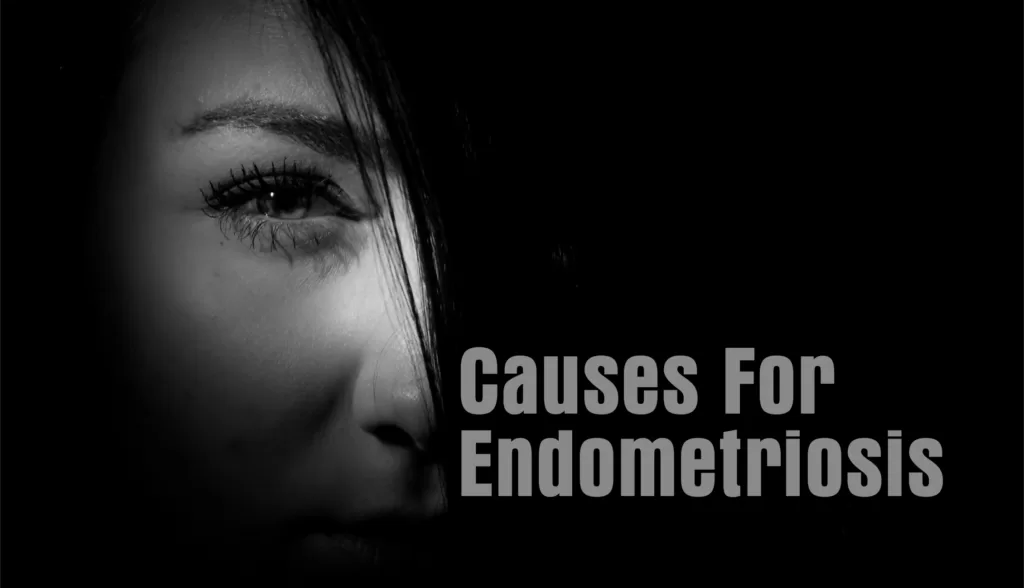
Endometriosis can cause damage to the fallopian tubes and ovaries and a decrease in egg quality. Because of this, fertility is affected. Although the exact cause of Endometriosis is not certain but some of the following conditions can be the reason –
The exact cause of endometriosis is not yet known, but experts believe that its possible causes may be the following:
1. Retrograde Mensuration
In retrograde mensuration or retrograde menstruation, the menstrual blood that should have passed out of the body moves back into the pelvic cavity through the fallopian tubes. This blood also contains endometrial cells. These endometrial cells stick to the pelvic walls and surfaces of the pelvic organs in the pelvic cavity. Sticking here, they grow and become thicker during each menstrual cycle and continue to bleed.
2. Changes in Peritoneal Cells
This is also known as ‘induction theory’. Experts believe that hormones or immune factors promote the transformation of peritoneal cells. These cells transform the lining of the abdomen into endometrial-like cells, which can lead to endometriosis.
3. Changes in Embryonic Cells
Hormones such as estrogen can cause embryonic cells to change into endometrial-like cells during puberty. However, embryonic cells are responsible for the early stages of embryonic development.
4. Surgical Scar Implantation
Endometrial cells can attach to a surgical scar after surgery like hysterectomy or C: section.
5. Endometrial Cell Transport
Blood cells or the tissue fluid (lymphatic) system can transport endometrial cells to other parts of the body.
6. Disorders in the Immune System
If there is any problem or disorder in the immune system, then it loses the ability to recognize tissue like endometrial growing outside the uterus and the body is unable to destroy them.
• Endometriosis also causes heavy bleeding and pain during periods. Due to this, women have to face a lot of trouble, on the other hand, it can also cause infertility. This problem is not due to any external infection but due to deficiency in the internal system of the body.
• When there is a problem with the immune system, the body begins to destroy the endometrial tissue growing outside the uterus, treating it as a foreign substance.
• Endometrial cells can get attached to the wound after surgery like hysterectomy, C-section.
• Bleeding during periods is caused by the breakdown of the endometrial tissue layer. But here instead of going out of the body, the blood starts accumulating in the pelvic cavity through the fallopian tubes. This condition is called trograde menstruation.
• Blood cells, due to the spread of endometrial cells to other parts of the body.
• Medicines being taken for any other disease that may interfere with periods.
• Temporarily and after menopause the problem of endometriosis ends forever. Even after menopause, if estrogen or any other type of hormone therapy is taken, then there is a possibility of endometriosis problem.
Ayurvedic Treatment For Endometriosis
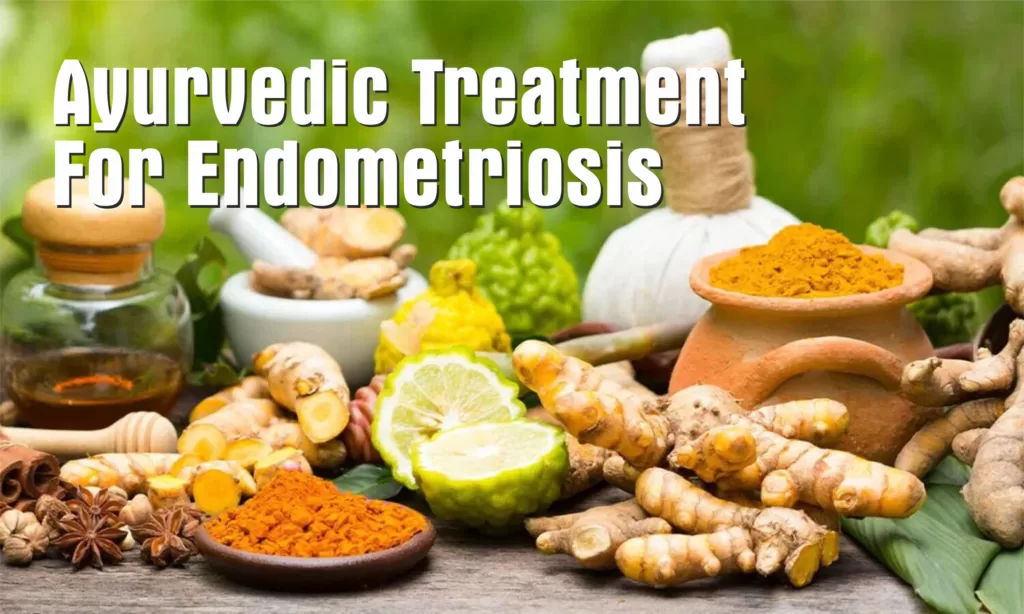
The growing endometrium layer starts affecting the reproductive organs. Which can further damage the tubes and ovaries. Talking about its treatment, natural treatment of endometriosis is very effective as compared to allopathy.
Ayurveda treats endometriosis using natural herbs and medicines. In this method, endometriosis Ayurvedic doctors treat the patient on the basis of his condition. Endometriosis treatment in Ayurveda provides relief from the problem through medicines, herbs, decoctions and many chemicals. Panchakarma therapy is also a good option to cure the disease of endometriosis. Ayurvedic doctors also suggest Ayurvedic therapy based on the condition of endometriosis.
Ayurveda places maximum emphasis on diet because the root cause of most of the diseases is our food and lifestyle. That’s why women suffering from Endometriosis need to pay a lot of attention to their diet. Women should include fiber rich foods in their diet. Apart from this, green vegetables, spinach and antioxidant foods must be consumed.
Medical Treatment For Endometriosis
There is no cure for endometriosis. Treatment usually involves surgery or medication.
1. Pain Medicine
The doctor can give pain reliever medicine. Non-steroidal anti-inflammatory drugs (NSAIDs) are given. Some women find period pain relief from naproxen.
2. Hormone Therapy
Hormone therapy lowers the amount of estrogen produced by your body and can stop your periods. It helps in reducing bleeding from wounds so that there is no more inflammation, scar and cyst formation. These include birth control pills, patches, and vaginal rings, Gn:Rh agonists, and danazol (Danocrine).
3. Surgery
If you have severe pain from endometriosis, you may also benefit from surgery. However, endometriosis and pain can come back.
4. Conservative Surgery
If a woman with endometriosis is trying to become pregnant, surgery to remove endometriosis implants while preserving the uterus and ovaries (conservative surgery) may increase your chances of success.
5. Interventional Surgery
In more extensive cases the doctor may prescribe interventional abdominal surgery. It can be done both by the normal method and laparoscopically. Even in severe cases of endometriosis, most can be treated with laparoscopic surgery.
6. Laparoscopic Surgery
In this, the surgeon inserts a thin laparoscope instrument through a small incision near the navel and inserts instruments to remove endometrial tissue through another small incision. After surgery, your doctor may prescribe hormone therapy to reduce pain.
7. Hysterectomy with Removal of Ovaries
Surgery to remove the uterus (hysterectomy) and ovaries (oophorectomy) is considered one of the effective treatments for endometriosis. Removal of your ovaries leads to immediate menopause.
The reduction of hormones produced by the ovaries may improve endometriosis pain for some, but for others, endometriosis that persists after surgery continues to cause symptoms. Early menopause is also associated with an increased risk of heart and blood vessel (cardiovascular) diseases, certain metabolic conditions, and early death.
Risk Factors For Endometriosis
There can be some disadvantages of having endometriosis, such as –
• Endometriosis can damage the fallopian tubes or ovaries, which can lead to fertility problems. Surgery can help remove patches of endometriosis, but it does not guarantee that you will be able to get pregnant.
• Both adhesions and ovarian cysts can occur if endometriosis tissue is in or near the ovaries. These can be removed with surgery but they can come back again.
• Bladder and bowel problems Endometriosis affecting the bladder or bowel can be difficult to treat and may require surgery.
Avoid the Things During Endometriosis
Some experts believe that the high amount of fat in beef or beef may encourage the body to produce chemicals called prostaglandins, which may lead to the production of more estrogen. This excess estrogen causes the growth of excess endometrial tissue, which leads to endometriosis.
• Women who ate the most trans fats had a 48 percent higher risk of endometriosis than those who ate the least trans fats, in comparison.
• Also, avoid alcohol and caffeine.
• Drinking soda increases your chances of developing endometriosis.
• Alcohol has also been proven to be a higher risk.
Home Remedies For Endometriosis
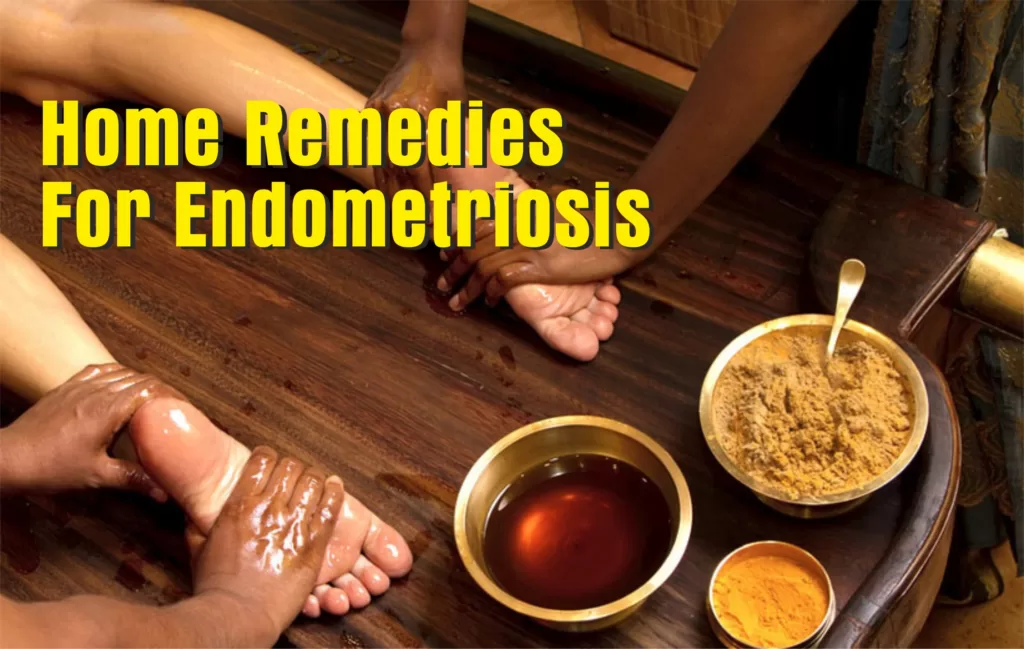
1. Steam
Steam can prove to be very helpful for any sufferer. This is one of the best home remedies. Heat can relax pelvic muscles, which may reduce cramps and pain. You can use a hot shower, a hot water bottle, or a heating pad to effectively treat cramps.
2.Castor Oil
Castor oil has been used for hundreds of years to treat endometriosis. It can be used at the very beginning, when cramps are first felt, to help the body get rid of excess tissue.
It is important that this technique is used only before menstrual flow and not during it. Castor oil should be massaged directly in the abdomen. You can also mix it with a few drops of a relaxing essential oil, such as lavender, to help relax pelvic muscles, and apply it to a warm compress on the abdomen.
3.Turmeric
Turmeric has anti-inflammatory properties that may be beneficial for people experiencing symptoms of endometriosis. It can also be used to manage endometriosis in the long term. Some research has also found that it has the ability to inhibit endometrial growth. You can take turmeric capsules, or make turmeric tea by boiling a cup of water and adding one teaspoon each of turmeric and ginger powder. You can also add honey and lemon. Depending on the symptoms, it can be taken one to three times a day.
4. Pelvic Massage
Massaging the pelvic muscles can help them to relax and reduce inflammation, thereby reducing cramps. Using a few drops of a good quality lavender essential oil can help further relax the muscles. Massage the affected area with light hands for 10 to 15 minutes at a time. Pelvic massage should only be used before the menstrual cycle.
5. Ginger Tea
Some people with endometriosis experience nausea as a result of the condition. Ginger tea is one of the best home remedies for nausea, and is scientifically proven to be safe and effective.
Conclusion
Endometriosis is a common, estrogen-dependent, chronic gynecological disorder. This is a condition caused by the presence of uterine endometrial tissue outside the uterine cavity. Endometriosis may present as superficial and/or deep pelvic peritoneal implants, adhesions, and ovarian cysts (endometriomas). Symptoms of endometriosis include pelvic pain and infertility. Endometriosis requires multidisciplinary care and long-term follow-up to monitor for associated disorders that may develop in susceptible women.
(Disclaimer : The purpose of this health-related article is to wake you up and aware of your health and to provide health-related information. Your doctor has a better understanding of your health and there is no substitute for their advice.)